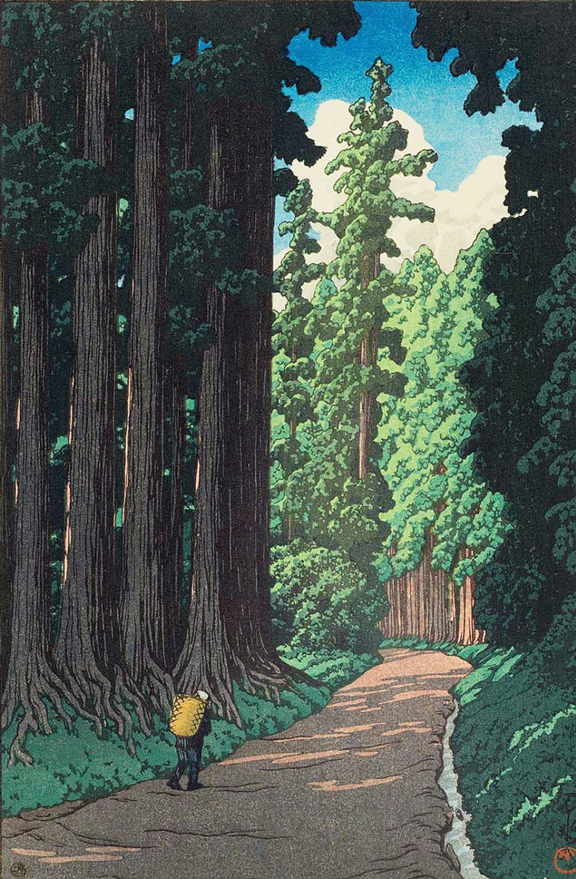In memory of Taitetsu Unno, one of the world’s preeminent scholars of Shin Buddhism, who passed away in December 2014 at the age of 85.
The ideal of monastic Buddhism is transcendence of mundane existence, as if one were ascending to the mountaintop. In contrast, the praxis of Pure Land Buddhism takes place by descending into the valley, the shadow of the mountains. We find a similar contrast in Chinese civilization. Like monastic Buddhism, the Confucian ideal may be symbolized by the soaring mountain peaks, manifesting the highest achievements of the literati. And like the Pure Land, Taoism is found in the valley and lowlands, a haven for those who do not fit into conventional society for whatever reason. But it is in this valley that life and creativity flourish. In the words of the Tao te ching:
The Valley Spirit never dies.
It is named the Mysterious Female.
And the Doorway of the mysterious Female
Is the base from which Heaven and Earth sprang.
It is there within us all the while;
Draw upon it as you will, it never runs dry.
In the valley fecundity is nourished and dynamic creativity is born. From its depth comes the life force that creates Heaven and Earth, immortalized as the Spirit of the Valley and identified with the feminine principle; its procreative vitality is inexhaustible. Hence, the name of this Taoist classic, the Way (tao) and its Power (te). The valley ultimately is the resting place for everything that is washed down from the mountaintop, collecting all kinds of refuse and garbage of society and welcoming the unwanted, the disappointed, and the broken.
In Japan, traditional Buddhist monasticism—whether Tendai, Shingon, or Zen—aims at the transcendence of earthly passions. Its basic precepts consist of renouncing all family ties, maintaining celibacy, mastering rigorous disciplines, avoiding contact with the opposite sex, and engaging in elaborate rituals. In contrast, Pure Land is the trans-descendence into the opposite world, the self-awakening to the immersion in the swamp of anger, jealousy, insecurity, fear, addiction, arrogance, hypocrisy. It was only natural that Pure Land teaching was originally welcomed especially by those of the lower classes, seen as unredeemable in the eyes of the privileged. But among this worthless debris and discarded refuse, a rich spirituality is cultivated, endowing a person with endless energy and boundless vitality.
Shin Buddhism comes alive for those who live in the valley and in the shadows. It challenges people to discover the ultimate meaning of life in the abyss of the darkness of ignorance. As we respond fully to the challenge, the Shin teaching helps us to negotiate our way through the labyrinth of samsaric life. The wonder of this teaching is that liberation is made available to us not because we are wise but because we are ignorant, limited, imperfect, and finite.
In the language of Pure Land Buddhism, we who are foolish beings (bonbu) are transformed into the very opposite by the power of great compassion.
Honen summed up the varied paths of Buddhism in his pronouncement: “In the Path of Sages one perfects wisdom and achieves enlightenment; in the Path of Pure Land one returns to the foolish self to be saved by Amida.” Religious awakening does not depend initially on who we are or what we do; rather, it is becoming attuned to the working of great compassion at the heart of existence. This attunement is realized through deep hearing (monpo) of the call from the depth. Nothing is required of us, other than the engagement with deep hearing. Since this is the only requirement—no precepts, no meditative practices, no doctrinal knowledge—it is known as the “easy path.”
“Easy path,” however, only describes the simplicity of the path, not its level of difficulty to realize, for the easy path is by no means “easy.” Deep hearing is a real challenge and can be a hard struggle, especially for the arrogant, because the call must become embodied in a person. Embodying means living the nembutsu from which flows the spontaneous saying of “Namu Amida Butsu” [“I entrust myself to the Buddha of Infinite Light and Life”]. The actual process thus may not be so simple, as we are reminded in the Pure Land saying: “Although the path is easy, few are there to take it.” The obstacles encountered are different from those encountered pursuing monastic disciplines on the Path of Sages because one must struggle with oneself in the midst of all kinds of entanglements in society. As James Hillman points out, “The way through the world is more difficult to find than the way beyond it.”
Pure Land Buddhism might suggest an otherworldly orientation, but its primary focus is on the here and now. Not the here and now grasped by the controlling ego-self, but the here and now cherished as a gift of life itself to be lived creatively and gratefully, granted us by boundless compassion. The bountifulness of great compassion makes possible our liberation from the iron cage of our own making.
♦
Excerpted from River of Fire, River of Water: An Introduction to the Pure Land Tradition of Shin Buddhism, by Taitetsu Unno. Published with permission of the Unno family.
Thank you for subscribing to Tricycle! As a nonprofit, we depend on readers like you to keep Buddhist teachings and practices widely available.
